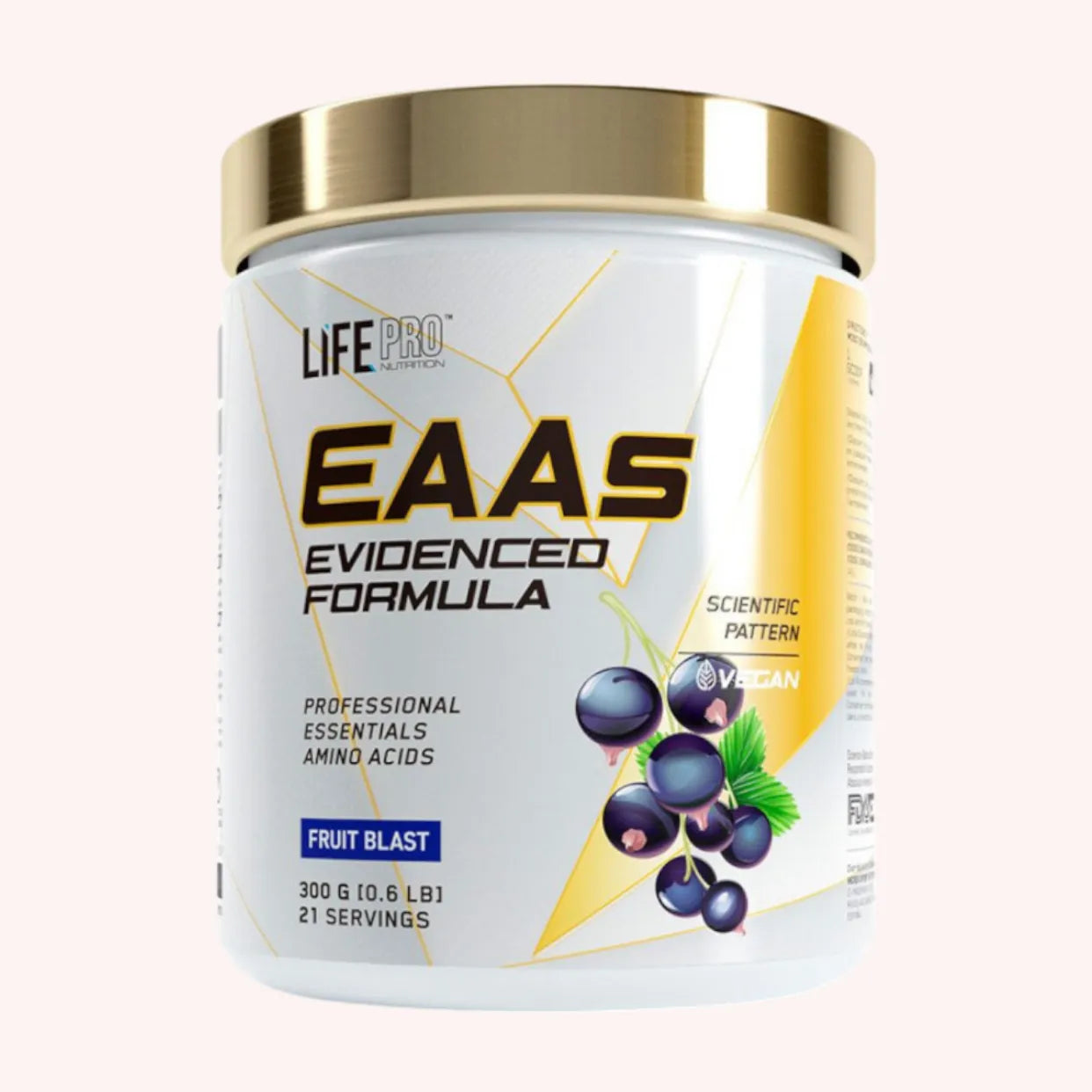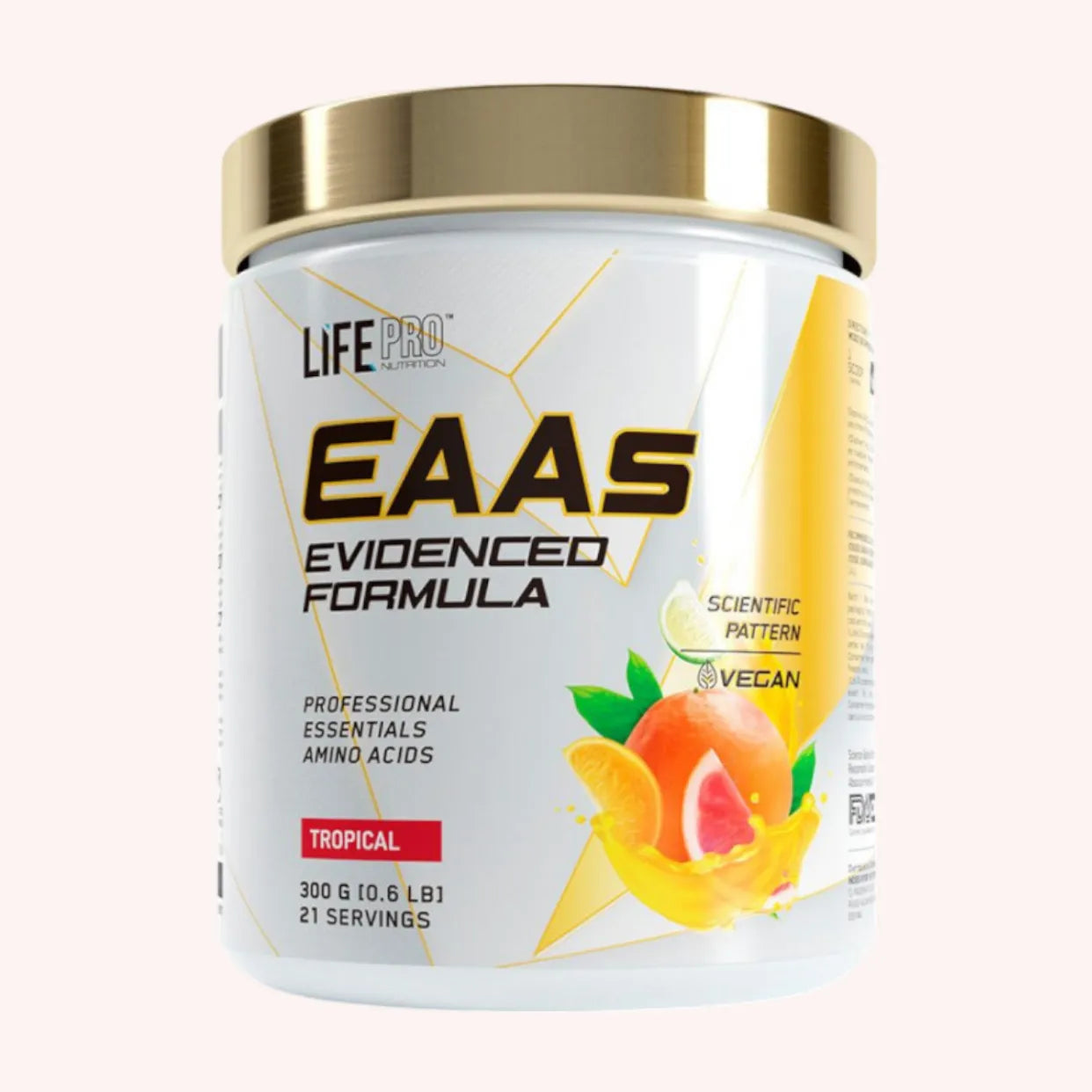In a gym, you quickly notice people with a well-built and imposing build. To achieve such physiques, these people have, for the most part, resorted to faithful allies: dietary supplements. Among the long list of dietary supplements, we often hear about EAAs or BCAAs . The term EAA is an acronym that stands for Essential Amino Acids in English, and Essential Amino Acids in French.
These amino acids are often listed alongside BCAAs in a sports nutrition store. These two products are generally a source of confusion due to their similarities. However, they do have some differences that should be noted. Which of these products should we choose: EAAs or BCAAs?
What do you need to know about EAAs?
Essential amino acids, known as EAAs, refer to the 9 essential amino acids found in muscle proteins. Proteins are made up of a total of 20 amino acids , 9 of which cannot be synthesized by the body itself. These 9 amino acids are therefore provided by dietary supplements and foods rich in protein. These essential amino acids are:
- Leucine
- Isoleucine
- Valine
- The amino acid methionine
- Lysine
- The amino acid phenylalanine
- Threonine
- Histidine
- The amino acid tryptophan
Among these 9 known essential amino acids, there are also BCAAs. In reality, BCAAs are also essential amino acids, but EAAs contain all 9 of the amino acid list.
How are EAAs used?
EAAs are used much like BCAAs, just like any other type of protein. They can be consumed during workouts and major meals throughout the day. It usually depends on your goals and the times of day you take them.
These amino acids therefore have a much broader scope of action than that attributed to BCAAs. This is in no way a means of demonstrating the superiority of EAAs over BCAAs.
When should you take EAAs?
Before sports training
They can be taken before starting a workout to reduce muscle frequency. They can also help optimize protein synthesis. As soon as a workout is over, they can be consumed to better prepare the body for proper recovery.
Taking EAAs during peri-training helps promote the post-exercise anabolic response. These essential amino acids can be taken before and after workouts to help your muscles grow. Consuming them is also a good way to regulate your body's recovery period.
What dosage of EAA is adequate?
On a daily basis, you should generally opt for a consumption of 10g of EAA for significant results. This dosage can be split into two equal parts, the first of which can be taken before the session.
The second portion, however, should be taken after the workout for satisfactory results. It's not necessary to take it every day, provided you're able to provide your body with enough protein.
EAA or BCAA?
For a long time, athletes have been drawn to the ability of BCAAs to easily build muscle. However, when reading the composition of EAAs, we realize that they go much further than what BCAAs offer.
In addition to BCAAs, EAAs also contain 5 additional essential amino acids. It is also noted that the isoleucine and valine levels in EAAs are almost identical to those of some types of BCAAs.
What do you need to know about BCAAs?
BCAAs are a beautiful composition of 3 essential amino acids known such as:
- Leucine
- Isoleucine
- Valine
These three amino acids ensure proper muscle development and help maintain optimal performance. This performance is achieved by reducing catabolism and increasing protein synthesis.
BCAAs are well-known in the sports world for their remarkable ability to build muscle mass. They are also very effective in reducing fatigue and are a lifesaver during workouts.
These amino acids provide a large energy reserve, and very quickly, to the muscle fibers after their absorption. There are several types of BCAAs with portions ranging from 2.1.1 to 10.1.1, in order to better meet the needs.
The number 2 or 10 expresses the leucine content, while the other numbers speak of isoleucine and valine.
Why do BCAAs combine these amino acids?
Studies carried out on amino acids have demonstrated that these branched-chain amino acids have a specific action. In fact:
- Leucine kick-starts protein synthesis and allows it to progress. Its absence prevents other amino acids from being absorbed properly.
- Isoleucine and valine have a fuel function for muscles when muscle glycogen stores are depleted.
- Studies on BCAAs have shown a 22% increase in protein synthesis. This increase is recorded after consuming 5.6g of BCAAs following a workout.
This combination of amino acids is highly valued by those who use it.
How are BCAAs used?
BCAAs are typically used before, during, and after workouts. These powdered amino acids are the easiest to use because they can be easily mixed into a shaker. Once added, they can be consumed whenever you want.
BCAAs also come in capsules or tablets and offer the same benefits as the powdered formula. You should be aware, however, that powdered BCAAs are the least expensive type available.
BCAAs, however, should be consumed two or three times a day, at doses of 5g to produce an effect. Protein synthesis and recovery are best enhanced on rest days, with a single 10g intake.
BCAAs provide more energy
Energy intake is vital for athletes because it allows them to exert more effort over the long term during training. BCAAs, therefore, allow for better performance by reducing muscle fatigue. This will allow you to push your workouts to the limit.
BCAAs are consumed first by the muscles, before using the glycogen stores available to them. This keeps the muscles' adenosine triphosphate levels high, creating a surplus of energy. Taking BCAAs before training creates a new source of rapid energy, which the body uses first.
BCAAs burn fat
These amino acids have been scientifically proven to help improve body composition. This is made possible by the presence of leucine, which defines muscles by increasing energy expenditure.
Leucine is an amino acid that promotes rapid fat burning, while valine and isoleucine help with glucose tolerance. These two other amino acids positively affect basal metabolism. Athletes on a diet or during a cutting phase opt for an increased BCAA dosage to maintain muscle mass.
EAA or BCAA: In summary
Ultimately, casual athletes or those with a high-protein diet can be satisfied with using BCAAs. EAAs, on the other hand, are a desirable solution for serious athletes looking for a complete nutritional supplement.
Taking EAAs means consuming BCAAs along with all the other essential amino acids. With this complete amino acid profile, your protein synthesis is increased, you gain muscle, and you recover properly. When choosing between EAAs and BCAAs, you must therefore take into account your goals and your health status.








